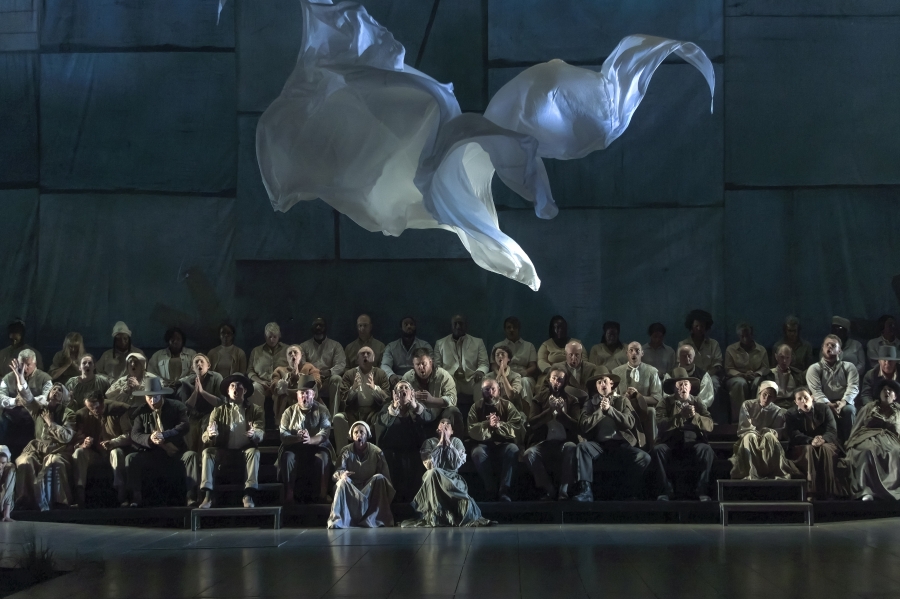
 (2 / 5)
(2 / 5)
The new opera Migrations, developed by the Welsh National Opera (WNO), brings together disparates histories and issues to send an anti-racist message. The opera consists of six interlocking tableaux protesting racism, slavery, and violence to the natural world. These issues deserve to be told and dramatised, yet drama requires tension, emotions, and characters, which are wholly absent in this production.
Migrations is a pot pourri of protest banners without a trace of life. None of the librettists took the trouble to write a character with real emotions, pain and joy, hope and disappointment. Singers explain disparate histories and issues to the audience rather than tell a story. The message is right and timely, but an opera is not a protest march.
Migrations was conceived as part of the celebrations of the 400th anniversary of the sailing of The Mayflower in 1620. This shows little understanding of the Pilgrims, who are here presented erroneously as oppressed people escaping persecutions. In reality, they were theocratic colonisers with little tolerance for each other never mind anybody else. The choir as Pilgrims singing ‘Freedom’ sits awkwardly with the overall anti-colonial, anti-racist, and anti-slavery message.
There are only two tableaux that stand out. One is Flight, Death or Fog, the story of Pero Jones, enslaved to the Pinney family in Bristol. Aubrey Allicock’s Pero has an impressive presence on stage which confers dignity and gravitas. The other is This is the Life! set in 1968 and depicting two Indian doctors coming to Britain to ‘fill the NHS skills gap,’ as they tell the audience. The Indian classical music and flamboyant Bollywood dance manage to lift the spirits.

Treaty Six by Sarah Woods depicts the plight of the Beaver Lake Cree Nation in today’s Canada trying to stop a pipeline going through their land. The English Lesson features a group of refugees reflecting on who they were at home and their status as refugees in a new country. Eric Ngalle Charles’s Birds sees children as birds migrating and endangered by humans destroying the natural world. The music and the children’s singing lack the necessary sombre tone to convey the message.
On the whole, this mishmash is kept together competently by the singers, the always excellent choir, and orchestra conductor Matthew Kofi Waldren. The music too often resembles a second-rate musical, with the exception of the chorale and Jasdeep Singh Degun’s Indian classical music.
